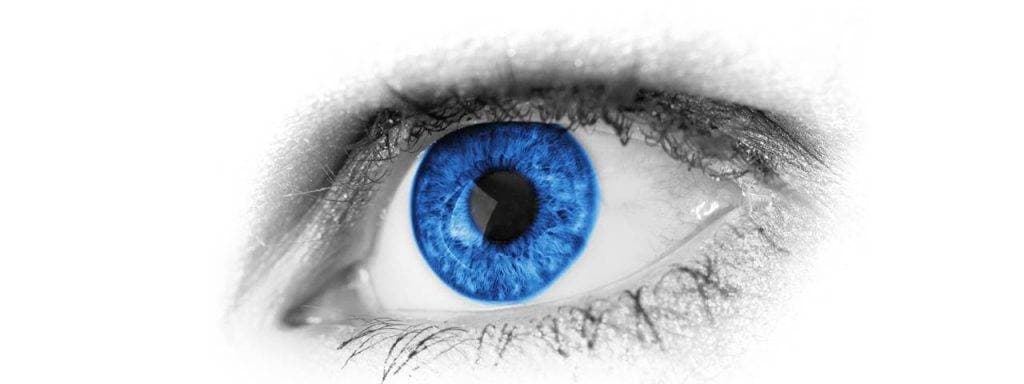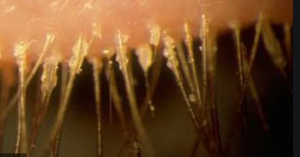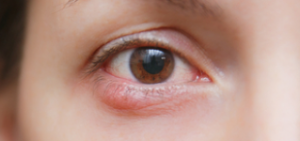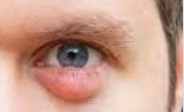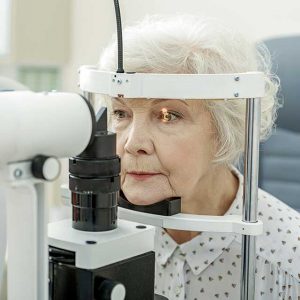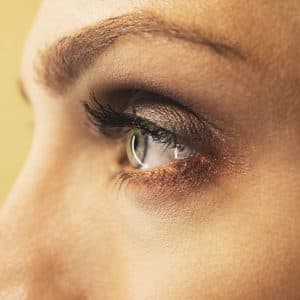The critical role of the eyelid
The eyelid’s primary function is to protect the eye from injury and provide a moist cavity for the normal functioning of the conjunctiva and cornea.
The eyelids contain muscles that enable them to open and close, and are covered with skin. The inner lid is lined with mucous membrane, while the outer lid is lined with eyelashes.
The edges of the upper and lower lids are lubricated by an oily secretion produced by the meibomian glands. This oily secretion contributes to the makeup of the tear film, and serves to decrease the rate at which the tears evaporate.
What are meibomian glands?
Meibomian glands are the oil glands that line the edge of your eyelids, near your eyelashes. Around 25 to 40 meibomian glands line the upper eyelid and 20 to 30 line the lower eyelid. These glands secrete the oil that coats the eyes and tear film, to prevent the tears from evaporating too quickly.
A closer look at the tear film
Tears consist of three layers that function to protect and nourish the surface of the eye.
- Oil layer– prevents evaporation of the water layer
- Water layer– sustains the eye
- Mucus layer– spreads tears to cover the entire surface of the eye
The tears lubricate our eyes and help to keep our eyes healthy. If there is a problem with any of the layers within the tear film, it can cause irritation, dry eyes, or blurred vision.
What is meibomian gland dysfunction?
Meibomian gland dysfunction (MGD) is a common condition that occurs when the meibomian glands don’t produce enough oil (meibum), or the oil is of poor quality.
- MGD is a common underlying cause of dry eye syndrome and blepharitis.
- A study including 233 adults found that 59% showed at least one symptom of MGD.
This condition occurs when the oil glands become blocked with thick secretions. This prevents a normal flow of oil and leads to a reduced quantity. The oil that successfully flows through the glands can be crusty or poor in quality and may cause irritation.
Meibomian gland dysfunction often does not present with any symptoms in its early stages. However, if the condition progresses without treatment, it can cause dry eye symptoms and/or inflammation of the eyelid.
When MGD becomes a chronic problem, and the glands are constantly blocked or clogged, oil secretion is impossible and can cause permanent damage in the tear film as well as dry eye syndrome.
The risk of developing MGD increases with age— with increased prevalence among those age 40 and older.
Additionally, women who wear eye makeup have a greater risk of developing MGD.
Common symptoms of MGD
- Dryness
- Burning
- Itching
- Redness
- Crusty discharge
- Watery eyes
- Blurred vision
- Light sensitivity
- Chalazions/styes
- Foreign body sensation
How is MGD diagnosed?
Through a comprehensive eye exam, your eye doctor can determine if you are suffering from MGD.
Your eye doctor may apply pressure to your eyelid to observe the secretions that are expressed. The quality, quantity, and stability of your tears will likely be evaluated as well.
The tear breakup time (TBUT) test is a common, painless procedure that your eye doctor may recommend to determine the stability of your tear film. This test involves placing a drop of dye on the front surface of your eye to be absorbed by the tear film. Your doctor will then examine your eye with a blue light which causes your tears to glow. If your tear film has reduced stability, it will be evident through this test, as the tears will break up quickly on your eye.
If you experience MGD symptoms contact an eye doctor for a proper diagnosis.
SEE RELATED: How Is Meibomian Gland Dysfunction Treated?
MGD and blepharitis
Blepharitis is one of the most common ocular conditions caused by an inflammation of the eyelids, usually as a result of a blockage in the meibomian glands at the base of the eyelashes. When meibomian glands do not produce enough oil, or produce oil of poor quality, bacterial growth may occur— resulting in a bacterial infection.
Symptoms of blepharitis
Many symptoms include:
- Redness
- Dry/itchy eyes
- Burning
- Swelling
- Oily eyelids
- Light sensitivity
- Increased tears
- Foreign body sensation
- Discharge
- Crusting on eyelashes or eye corner
Meibomian blepharitis can cause:
- Redness of the lining of the eyelids
- Blockage of oil glands in the eyelids
- Poor tear quality
If you are experiencing symptoms of blepharitis, schedule an exam with an eye doctor as soon as possible to obtain a proper diagnosis and effective treatment plan.
Demodex mites and MGD
Demodex are microscopic mites that live in the meibomian glands, and eyelashes. The mites come out during the night to eat the skin cells of your eyelids, and lay eggs and expel waste products in your eyelid glands, and eyelash follicles.
Demodex mites cause significant problems when they increase into large numbers and cause an infestation. This results in severe inflammation and mechanical damage to your meibomian glands and eyelashes.
Symptoms of a demodex mite infestation
- Dry eyes
- Redness
- Tearing
- Flakes in your eyelashes
- Burning or stinging
- Eye or eyelid irritation
- Itchy eyes or eyelids
- Foreign body sensation
- Intermittent blurred vision
- Light sensitivity
- Brittle/loss of eyelashes
- Misdirected eyelashes
- Eye or eyelid infections
Demodex mites can cause MGD, blepharitis, dry eye, styes, chalazion, and ocular rosacea.
Contact an eye doctor if you are experiencing any symptoms of a demodex mite infestation.
Early treatment to eradicate the infestation is critical in order to reduce irreparable damage to your meibomian glands and eyelashes.
How is MGD treated?
LipiFlow is a procedure used to open the meibomian glands for improved natural production of lipids (oil), necessary to reduce evaporation of tears. LipiFlow has revolutionized dry eye treatment, relieving symptoms in 86% of dry eye patients.
iLUX is used to melt the build up of waxy secretions blocking the meibomian glands.
TearCare involves a procedure in which heating patches are applied to the external eyelids and connected to a handheld heating device. This device melts the waxy build up of secretions in order to unclog the meibomian glands.
Intense pulsed light (IPL) is performed using a special light that causes the blood vessels in the eyes to open for light absorption, coagulate, and then close. This process decreases both inflammation and bacterial overgrowth. Four treatments are generally required to see optimal results.
Blephex involves a hand-held device that gently exfoliates the eyelid margins to eliminate the bacterial debris and open the meibomian glands When the inflammation is treated, your overall eyelid health can improve.
Lid debridement may be performed to clean the keratin and other debris from your eyelid margins, and open up the meibomian glands. This is performed using a specialized hand-held device.
Steroid eye drops are prescribed, usually in combination with medicated eye drops. These drops function to reduce inflammation, thereby improving tear flow.
Restasis prescription eye drops are prescribed when dry eye symptoms are severe, an artificial tears solution may not be strong enough. In this case, your eye doctor will give you a prescription for medicated eye drops that can facilitate increased production of tears.
Omega-3 supplements may reduce your risk of meibomian gland dysfunction. These fatty acids help to decrease inflammation correlated with MGD and reduce the development of debris build-up within the meibomian glands.
Meibomian gland dysfunction can cause significant ocular discomfort and dry eyes, but can be effectively treated if detected early.
LEARN MORE: Guide to Eye Conditions
If you are experiencing any symptoms of this condition, or notice any change in your eyes or vision, contact an eye doctor for a comprehensive examination.
A proper diagnosis and effective treatment plan will alleviate your discomfort and get you feeling like yourself again!

